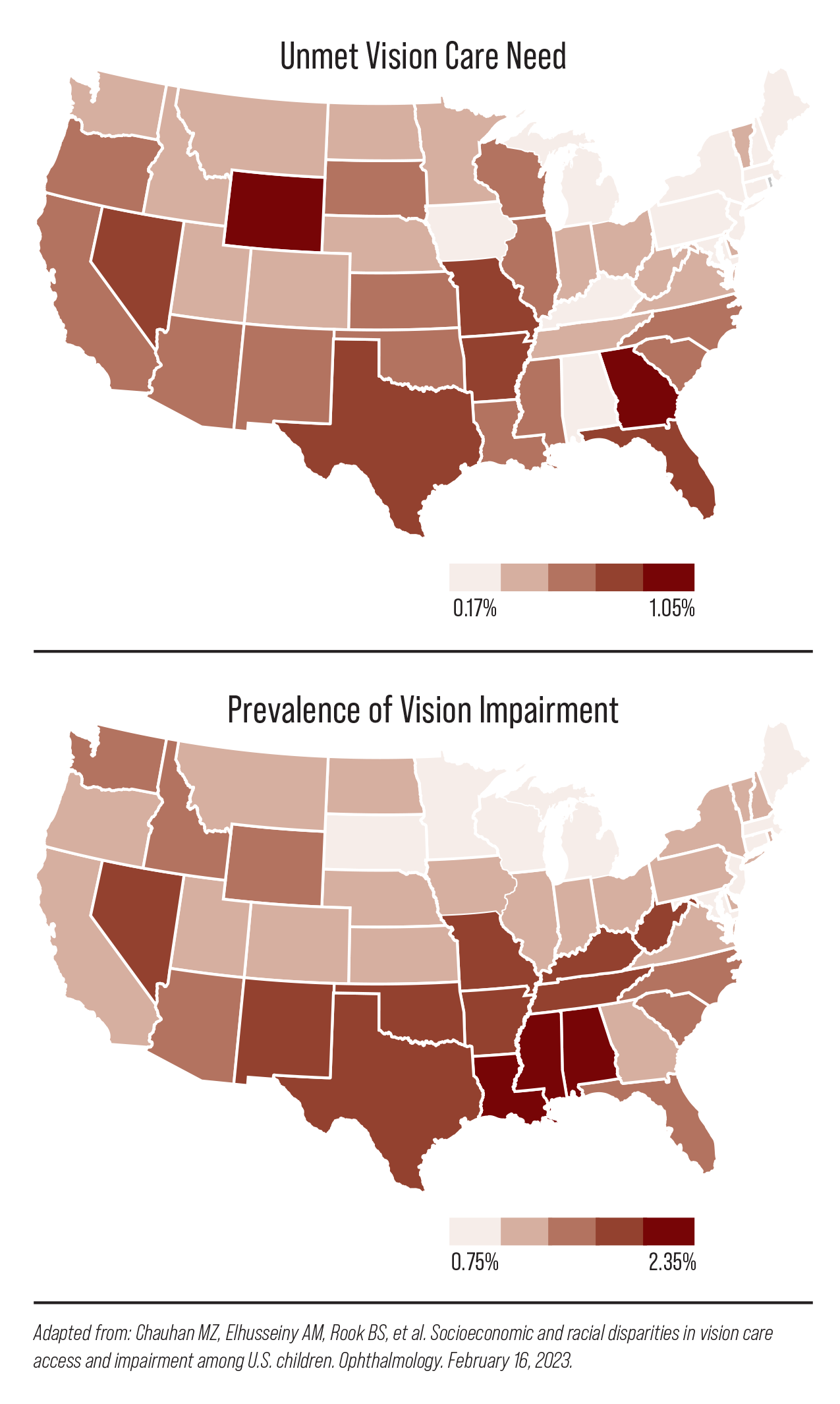 |
|
Unmet vision care needs were found to be highest in southern states, with non-Hispanic Black children more likely to report this discrepancy than their non-Hispanic white counterparts. Click image to enlarge. |
Health disparities are seen across health care, and it’s becoming more important to identify socioeconomic factors at work in addition to quantifying the extent of the differences. In a recent study, researchers explored the racial disparities in vision access and eye health in children using the National Survey of Children’s Health (NSCH) in the United States by measuring differences in unmet vision care needs and reported vision impairment and found that unmet vision care was the highest in southern states.
Data from 2016 through 2020 was analyzed and included 174,551 completed surveys. The authors took into account socioeconomic status using household income level and insurance status. Income was measured as a percentage of the federal poverty level and categorized as low or high socioeconomic status while insurance was categorized as either insured or not insured. Additional variables included age in three categories (0-5, 6-11 and 12-17), sex (male or female) and state of residence.
Unmet vision care need was found to be highest in Georgia, Wyoming, Texas and Arkansas, with the lowest rates (i.e., best access) clustered in the Northeast. Rates of vision impairment were highest in a cluster of states in the south, including Louisiana, Alabama, Mississippi and Arkansas. In those between the ages of six and 11, Hispanic children were significantly more likely to report both unmet vision care needs and vision impairment than White children. In children between the ages of 12 and 17, non-Hispanic Black individuals were significantly more likely to report unmet vision needs, while Hispanic children were again more likely to report vision impairment.
“We found that non-Hispanic Black children within both the lowest and highest household income levels were significantly more likely to report unmet vision needs compared with their non-Hispanic white counterparts. Hispanic children were more likely to report vision impairment again in both the lowest and highest income categories compared with non-Hispanic white children,” the authors wrote in their paper.
The authors concluded that clustering of unmet vision care and impairment in southern states needs further investigation due to rural areas facing challenges when it comes to accessing health care, including limited access to medical facilities, fewer medical professionals, lower Medicaid reimbursement and higher poverty rates.
“All of these factors can combine to create additional barriers to accessing eye care and ultimately lead to worse outcomes, particularly for children,” the authors concluded. “The findings presented in this work add to the growing body of literature on disparities in vision health and eye care, providing key data to inform targeted and actionable plans to improve vision health for our children now and in the future.”
Chauhan MZ, Elhusseiny AM, Rook BS, et al. Socioeconomic and racial disparities in vision care access and impairment among U.S. children. Ophthalmology. February 16, 2023. [Epub ahead of print]. |


